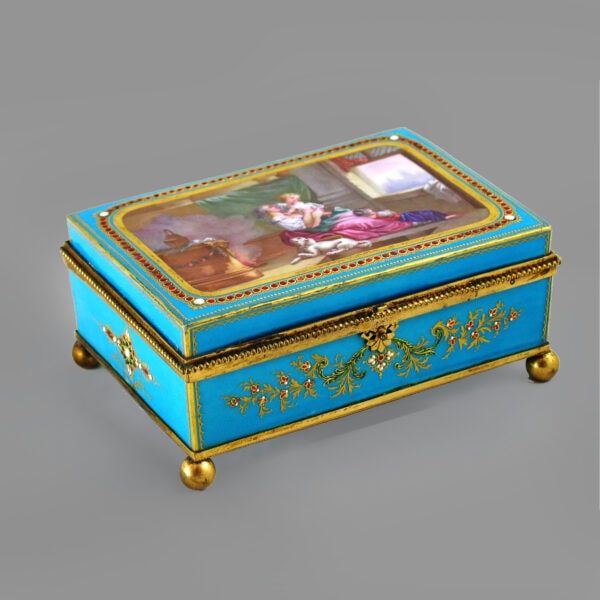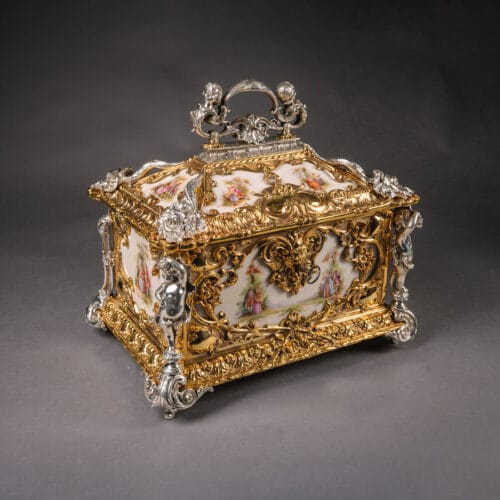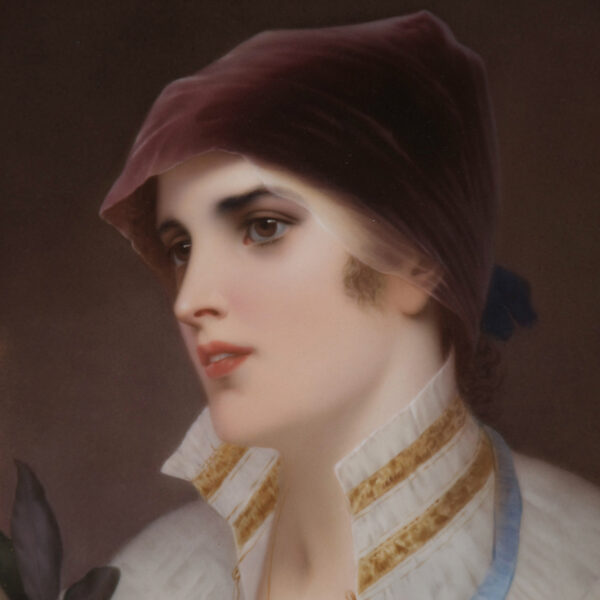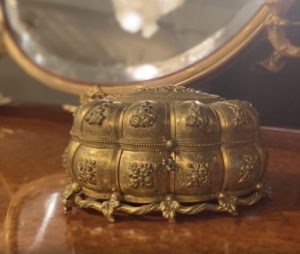Sèvres
A Rare and Decorative Set of Twelve Sèvres Azure Blue Plates
£6,800
A Rare and Decorative Set of Twelve Sèvres azure blue Plates In Their Original Leather Fitted Case. Each plate with Sèvres mark to the reverse and...
Dimensions
Height: 23 cm (10 in)Width: 50 cm (20 in)
Depth: 27 cm (11 in)
Description
A Rare and Decorative Set of Twelve Sèvres azure blue Plates In Their Original Leather Fitted Case.
Each plate with Sèvres mark to the reverse and Château des Tuileries.
This rare set of Sèvres plates each have an azure blue ground centred by a white central reserve with gilt tooled highlights finely painted with a monogram above a laurel garland and flanked by cherub figures.
French, Circa 1840.
Date
Circa 1840
Origin
French
Medium
Porcelain
Signature
Each plate with Sèvres mark to the reverse and Château des Tuileries.
The Sèvres Porcelain manufactory was founded to the east of Paris in the disused royal château of Vincennes, late in 1739-40.
It was not until 1756 that it moved to the village of Sèvres, west of Paris, strategically placed en route to King Louis XV’s palace of Versailles. Here it was also adjacent to Louis’s mistress Madame de Pompadour’s own château at Bellevue.
A great lover of Sèvres porcelain, she was delighted with the factory’s new location – as she knew she could entice Louis to take a greater interest in it when it was so near to their own residences. Indeed, the King became such a keen patron of the factory that when in 1759 it ran into financial difficulties, he bought out the shareholders and became the sole proprietor. The factory remained a royal enterprise until the French Revolution, when it was nationalised.
Sèvres’ position at the beginning of the nineteenth century was extremely precarious. No longer a royal enterprise, and having lost much of its clientele during the revolution, its funding reflected the ruinous state of the French economy.
However the Manufactory rose to this challenge, achieving the remarkable accomplishment of staying continuously in the forefront of European ceramic production despite the myriad changes in technology, taste, and patronage that occurred during this tumultuous century. The vast and diverse production of the Sèvres factory in the nineteenth century resists easy characterisation, and its history during this period reflects many of the changes affecting French society in the years between 1800 and 1900.
Important designers and influential artistic directors were always at the forefront of Sèvres’s innovation. Famous artists who designed for Sèvres have included Louis-Simon Boizot, Théophile Fragonard, Hector Guimard, Serge Poliakoff , Auguste Rodin and Louise Bourgeois. One of the most influential artists was Albert Ernest Carrier-Belleuse who became artistic director in 1876 and was famed for his designs.
Bibliography:
Meyer, Jonathan. Great Exhibitions – London, New York, Paris, Philadelphia, 1851-1900, Antique Collectors’ Club, (Woodbridge, UK), 2006.
Savill, Rosalind. The Wallace Collection: Catalogue of Sèvres Porcelain, Vol III, Paul Holberton, 1998.
Paredes, Liana. Sèvres Then and Now: Tradition and Innovation in Porcelain’, 1750-2000, D Giles Ltd, 2009.
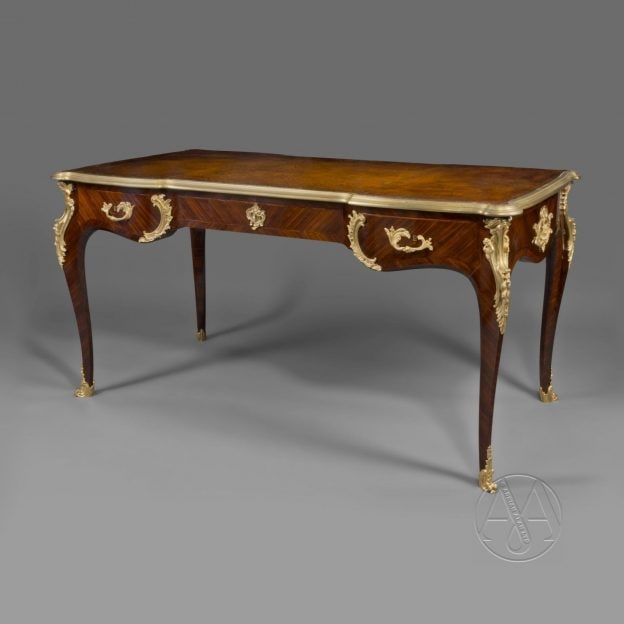




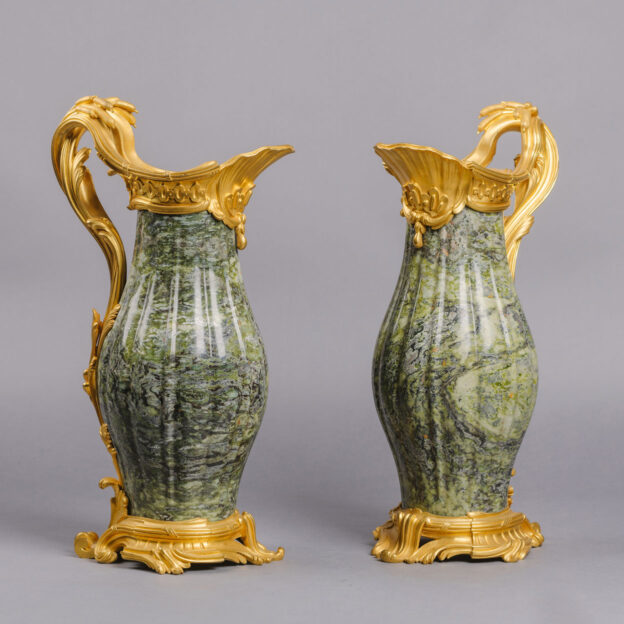
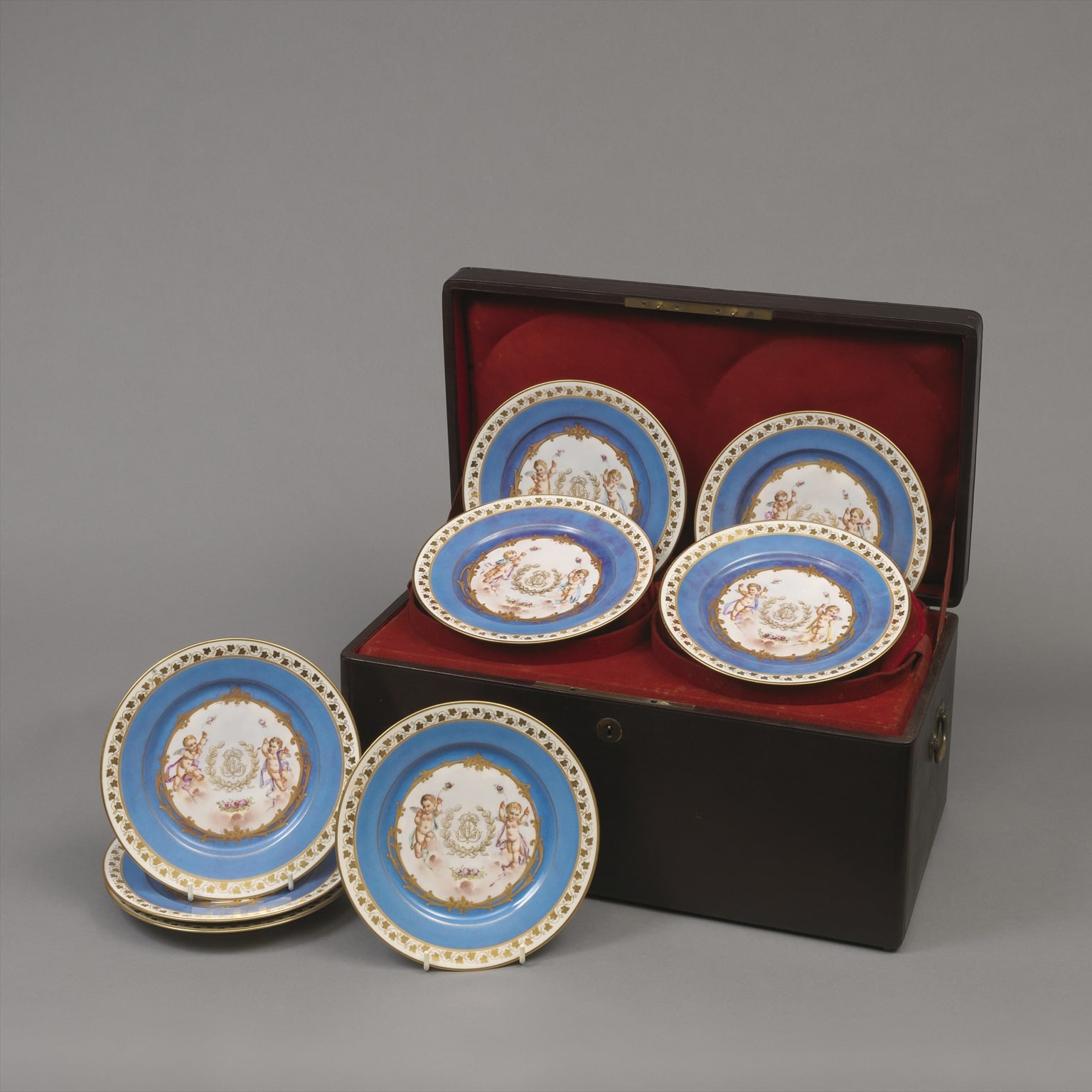

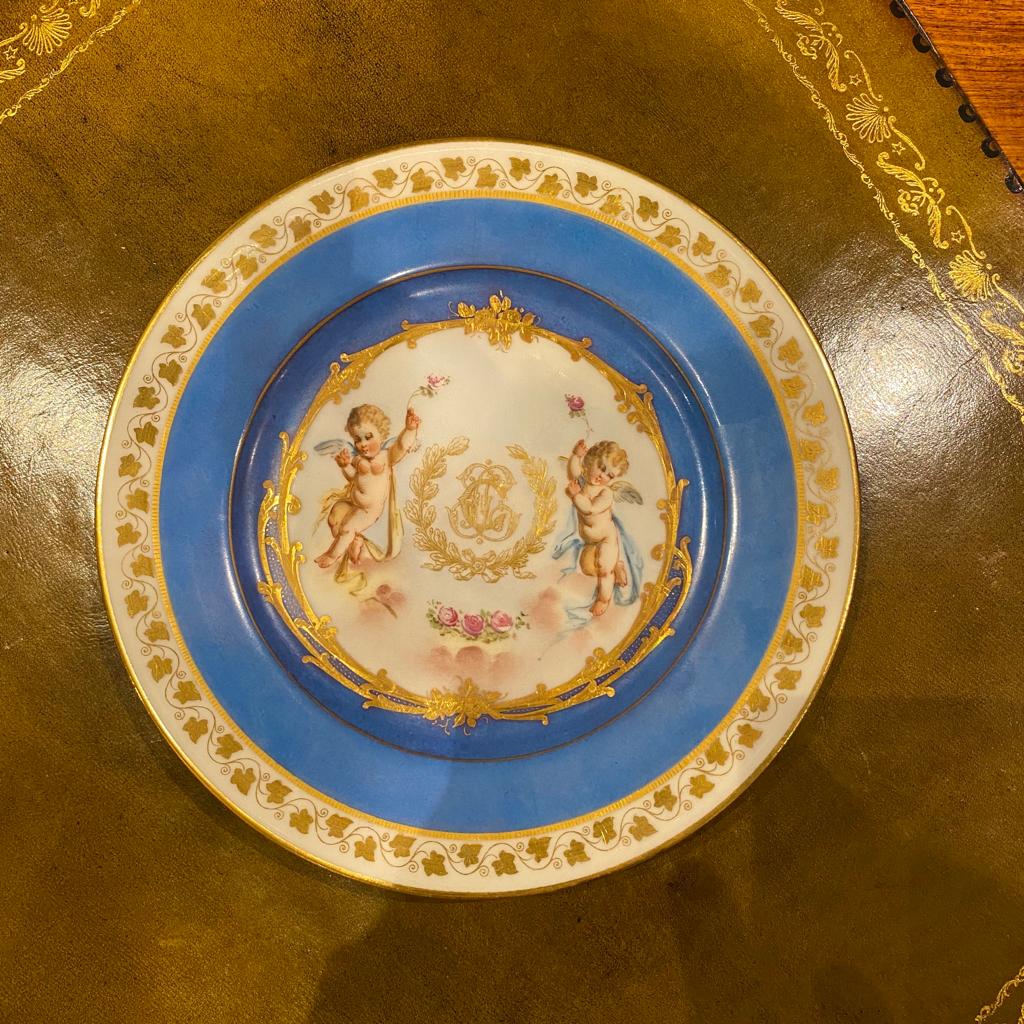

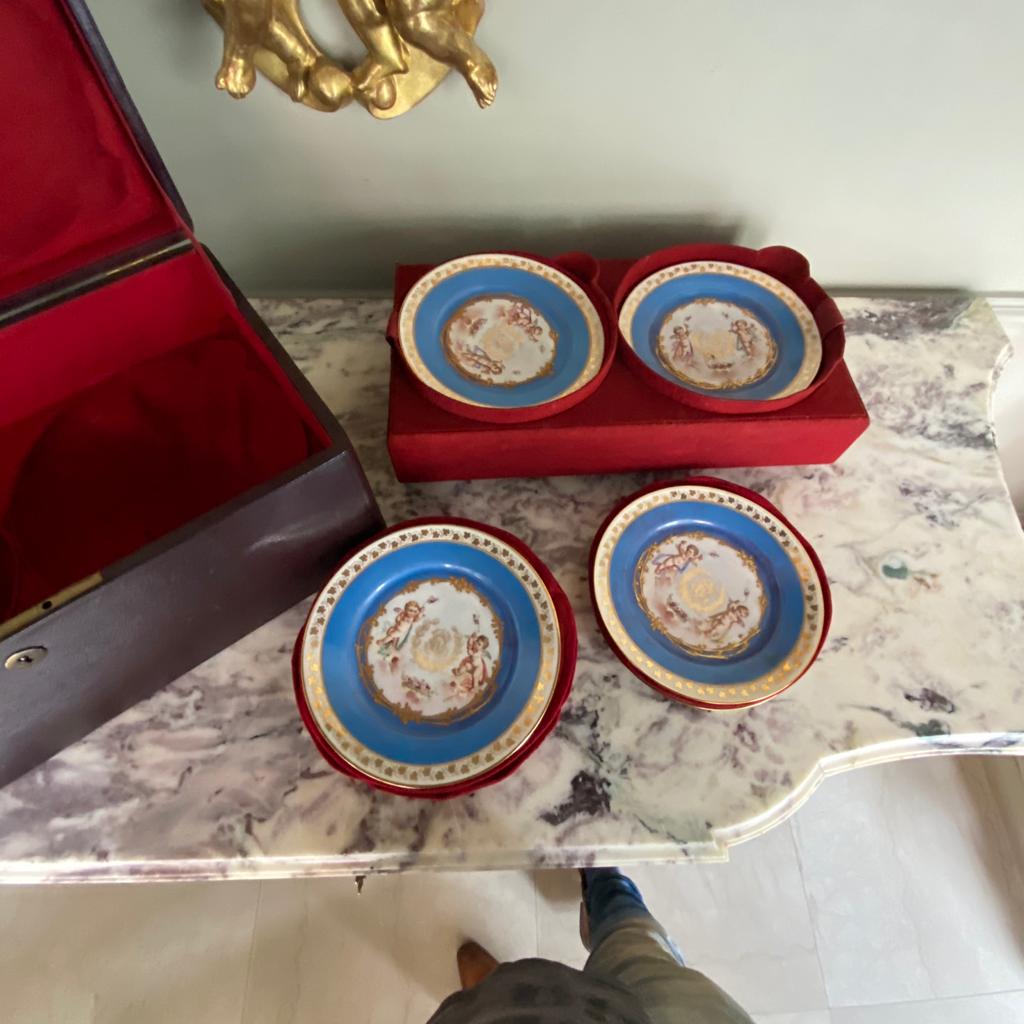
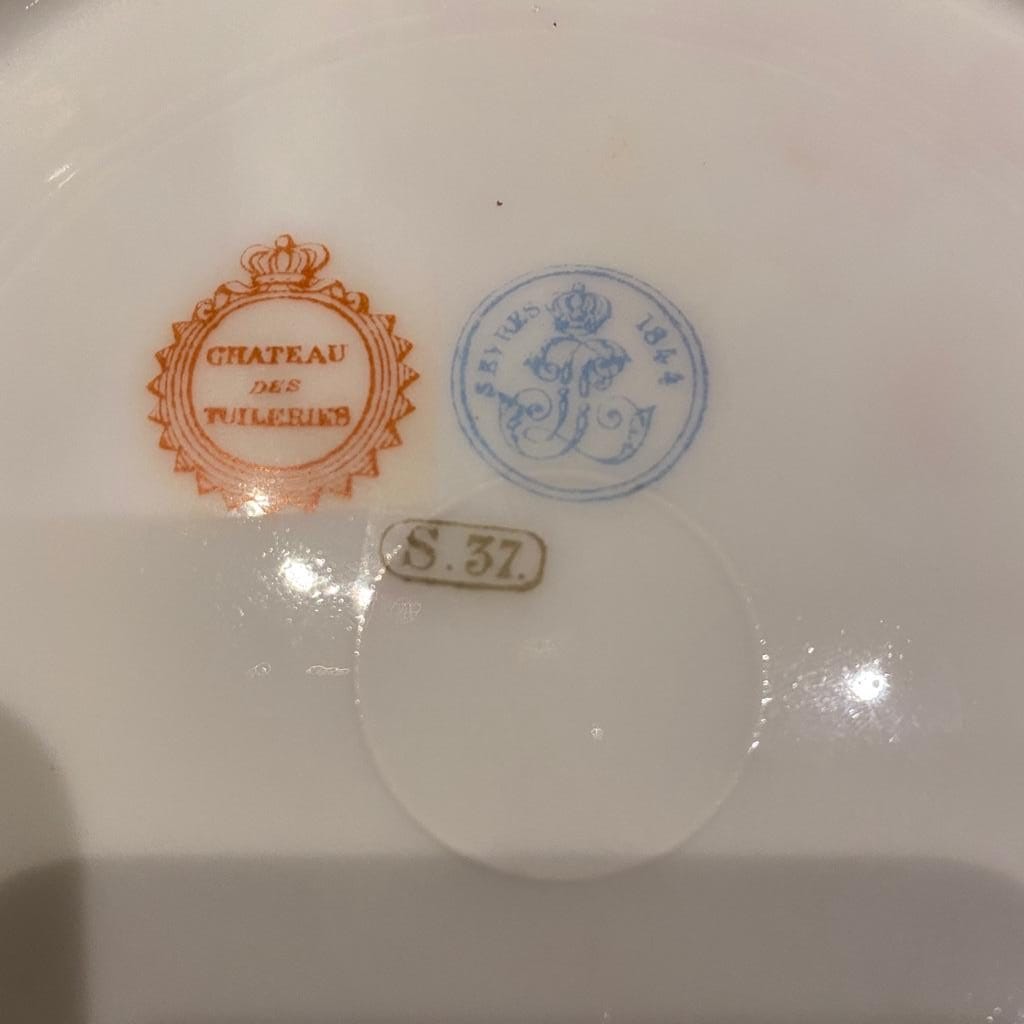
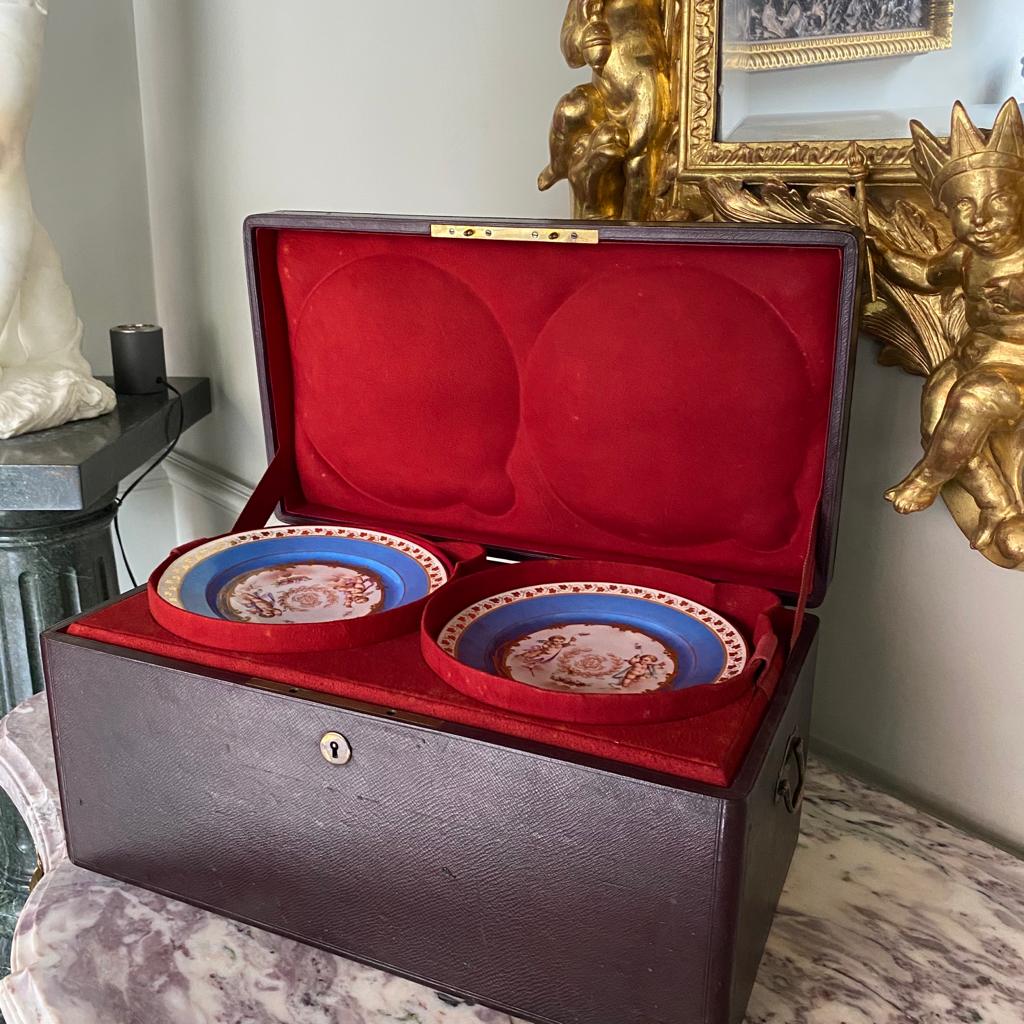
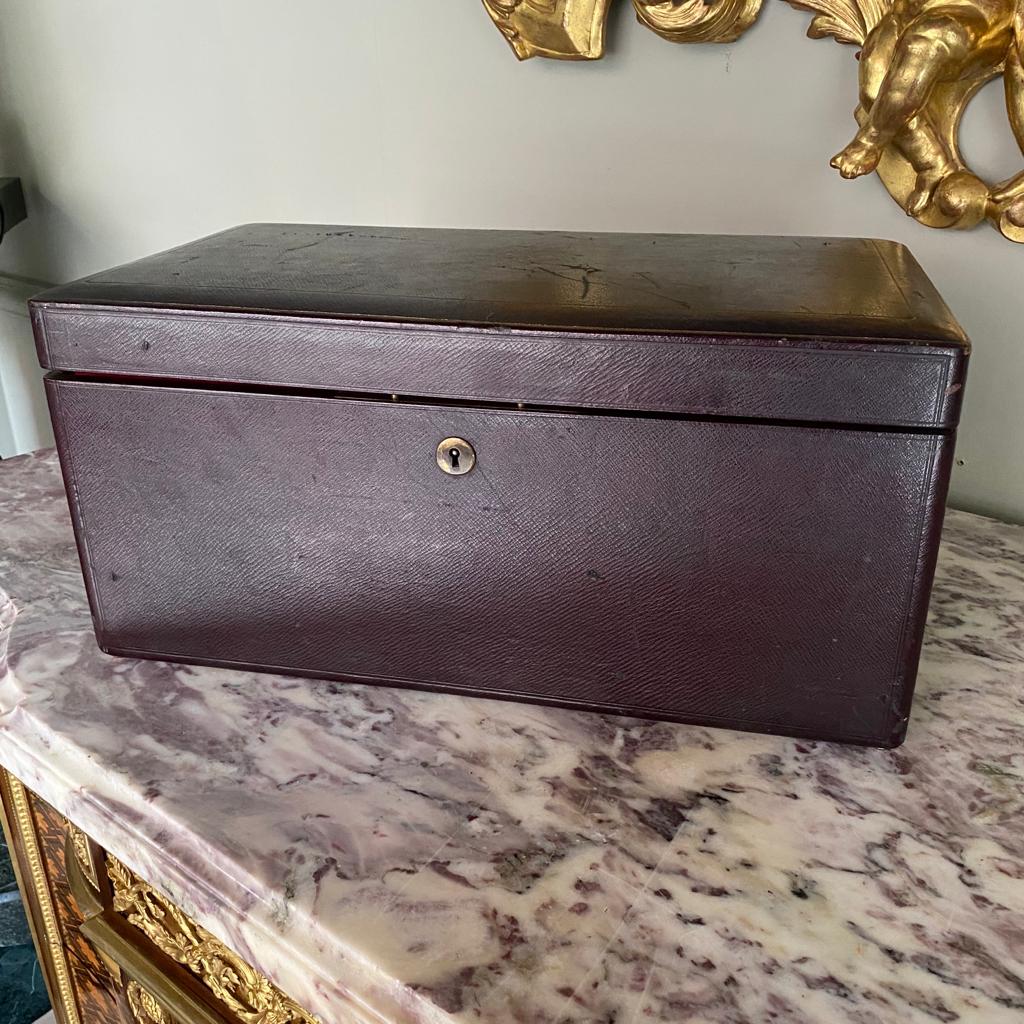

 Print
Print